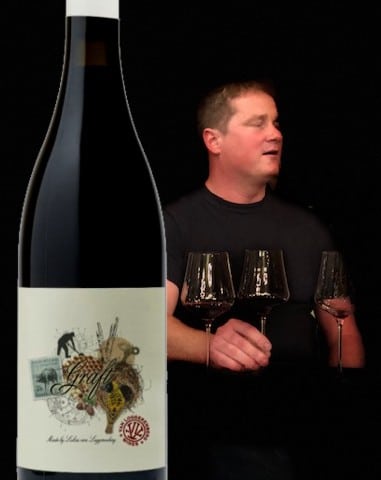Tim James: The Van Loggerenberg and Craven new releases
By Tim James, 1 April 2019
I had thought that I wouldn’t write about last week’s Cape Town tasting of the new releases of Van Loggerenberg and Craven as I knew they were to be covered by Christian Eedes on this website (and by Angela Lloyd elsewhere). But my response to many of the wines, especially the Van Loggerenbergs, was markedly different from Christian’s, so I decided to offer my observations, for the sake of making a second opinion available – concentrating on any differences of appreciation rather than similarities.
Lukas van L’s two 2018 chenins seemed to me pretty much in line with the 2017s, with Trust Your Gut (I wish I could come close to liking that name!) the more immediately charming, sweet-yellow-fruited of the two, with plenty of depth, flavour and character. Unlike Christian, I appreciated more the Kameraderie (nicer name too!). I relished its element of steely austerity abetted by a little phenolic grip – in the context of deliciousness making it a more complete and profound wine. Though I can understand that many would prefer the delights of the other one in youth.
As to the syrahs on offer that day, well; Christian and I often differ about syrah quality I think, and certainly, do over these. The Craven Firs 2018, from the Faure area of Stellenbosch, is, agreed, a most attractive, good wine, with a lovely structure despite (?) its modest 12.5% alcohol, with pure, perfumed fruit; very well balanced, light-feeling and fresh. But for me the Van Loggerenberg Graft, from Polkadraai Hills is altogether more complex and remarkable. This granite-soiled area is proving itself to be of the great and most recognisable terroirs for Cape Syrah – certainly, the finest yet to be revealed in Stellenbosch, with other particularly excellent examples coming from Reyneke (especially the Reserve Red), and Reenen Borman’s Sons of Sugarland Syrah. Carinus Syrah is there too. Graft 2018, with its spicy (pepper, cinnamon) dark and red fruit, the whole bunch pressing and the oaking contributing to but not dominating the character, is above all a first-rate product of the terroir – deep, expressive, already harmonious, and distinct and fine. Altogether, if I were to be obliged to score these two syrahs, I’d probably be content to swop around the 92 and 95 given by Christian, with my higher rating going to Graft.
Van Loggerenberg Breton is also from Polkadraai – three different parcels, however. Another wine accenting savouriness rather than obvious fruit, despite the fragrance and the depth of flavour, with tobacco and dried herbs amongst its subtle, youthful complexities. Beautifully dry, with a fresh acidity and a firm tannic structure that will be even more compelling. Perhaps it was the varietal herbal quality that restrained Christian’s scoring (91), but he also notes it as “angular”, which was not a description that occurred to me, and I clearly admired it more than he did.
Happily, Christian and I agree on the merits of the Geronimo Cinsault – one of a small handful of truly ambitious, serious wines made from this variety in the Cape; and totally delicious to boot. Agreement too about the savoury, grippy Break a Leg Blanc de Noir. Again, it’s a rare example of local seriousness in the genre, but I was a little disappointed in the 2018 compared with previous vintages, which I recall having more fruit intensity and tasty harmony.
Incidentally, I thought this release was the best showing yet of Jeanine and Mick Craven’s range. I suspect it’s less a vintage thing (though their performance in a difficult year is testament to especially Jeanine’s work and constantly paying attention to what the vines were doing), and more a matter of increasing their confident understanding of their grapes and of their own focus. They are all modest wines (in the very best sense of that word), light and fresh – but with none of them this year teetering on the lower edge of vinosity. I have previously described my pleasure in the new-look Craven Cabernet Sauvignon.
Altogether, from these two producers, a welcome new angle on what can be done in what remains the Cape’s foremost, though not most exciting or dynamic, region.
- Tim James is one of South Africa’s leading wine commentators, contributing to various local and international wine publications. He is a taster (and associate editor) for Platter’s. His book Wines of South Africa – Tradition and Revolution appeared in 2013.









Comments
0 comment(s)
Please read our Comments Policy here.